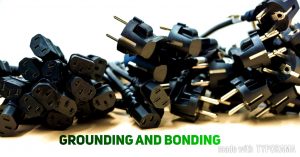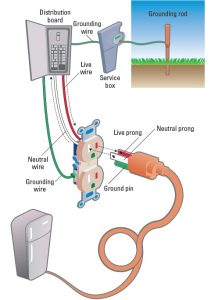 You wouldn’t go running without tying your shoes would you? It’s probably not too wise to walk across the street without looking both ways. Also never try to catch Pokemon while walking near cliffs. Seriously folks. And it’s kind of silly to work on electrical wiring without knowing the difference between grounding and bonding .
You wouldn’t go running without tying your shoes would you? It’s probably not too wise to walk across the street without looking both ways. Also never try to catch Pokemon while walking near cliffs. Seriously folks. And it’s kind of silly to work on electrical wiring without knowing the difference between grounding and bonding .
We want you to be as safe as possible outside and inside of your home. Grounding and bonding in electrical systems is something that many people do not understand and/or take for granted. Don’t worry, we’ll explain the differences, similarities, and importance of electrical grounding and bonding for you. Preparing you to be a safer, more knowledgeable property owner.
Grounding Differences
The main reason for grounding in electrical systems is safety. An electrical appliance with a metal case or cabinet (such as a laundry washer or dryer) will have a cord with a 3-prong plug at the end, ‘live’, neutral, and ground. When the appliance is plugged into the outlet, the three prongs of its plug connect with the corresponding parts of the outlet. As a result, the metallic case of the appliance will have a connection to earth (grounded) through the ground port of the power outlet.

The three prongs are ‘live’, neutral, and ground. Within the appliance cord there will be a grounding cable connecting the metal case of the appliance and the ground prong on the plug. When the appliance is plugged into the outlet, the three prongs of its plug connect with the corresponding parts of the outlet.
Large electrical equipment may often have a metal cabinet or case that might become electrically energized due to eventual insulation failure within the equipment. If that happens, then the equipment case could carry enough voltage to shock anyone who touches it. To prevent this, metallic parts, found in electrical appliances or equipment, that could be accidentally energized is connected to a grounding electrode that eventually will be embedded in the earth, or to a building grounding system.
The electrical system is directly grounded through cables and metal cabinets of main circuit panels, main and sub-main breakers, hard-wired lamps, transformers, and distribution panels.
Bonding Differences
In a similar fashion, bonding is employed to protect from accidental electric shock. It is used mostly where several electrical devices with grounded conductive surfaces are installed close to each other. By connecting cables to the conductive surface of each device, bonding is then able to occur.
The purpose of bonding is to ensure the electrical continuity of the fault current path. Providing the ability for any fault current that’s likely to be imposed, to be conducted safely, and to aid in the operation of the device. Properly bonding all metal parts within an electrical system helps ensure a low-impedance fault current path.
Why it’s important
When you think about it, bonding and grounding are sort of “joined at the hip,” because when you ground you’re really bonding it to the earth’s potential.
Electrical bonding and grounding is basically defined as the tying together of all conductive items in a facility so as to keep them at the same electrical potential. This needs to be done not only for safety reasons, but also to ensure the health of equipment and to help eliminate potential hazards for the house.
You should pay very close attention to the grounding and bonding of all electrical circuits. Sometimes, it is very hard to figure out which components are electrically connected to others. Remember when it doubt, refer to a qualified electrician for all electrical questions!



















Great post. I used to bbe checking constantly this wenlog and I’m impressed!
Very useful info specially the closing section 🙂 I
maintain such information much. I uswed to be seekjng this
particular information for a long time. Thanks and good luck.
Anything we can do to help 🙂